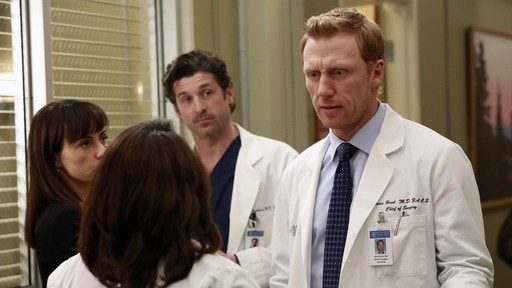
Genome Mapping
Well, if you weren't nervous about the fate of the hospital before, are you now?
What is Seattle Grace Mercy West going to do without Derek Shepherd, Cristina Yang, Meredith Grey, Arizona Robbins, and Callie Torres? That group includes a world-famous neurosurgeon, the future of cardiothoracic surgery, an up and coming general surgeon, an amazing pediatric surgeon, and an innovative orthopedic surgeon. It certainly won't seem as attractive to buyers now, will it? Will the hospital even survive?
We better hope that those five come up with the money and the plan. Because right now? Things look a little dicey…
Meanwhile, Bailey wants to sequence the genome of a patient's cancer?!
First, it might help to understand the basics of genome sequencing in general.
Every cell in the human body contains a complete set of DNA, which houses the instructions for everything ranging from hair color to risk of certain diseases. For several years, doctors have had the tools to test people's genes to see if they have certain mutations that are related to specific conditions – for example, we know the specific mutations for both cystic fibrosis and sickle cell disease.
But recently, researchers have discovered methods to map out a person's entire genetic sequence, otherwise known as their genome, by sequencing all 20,000 genes at one time. Every person has the same 20,000 genes, but everyone has individual discrepancies when compared to one another. These discrepancies can be inherited, or sometimes they can just spring up without any known reason or cause.
How does one sequence a genome?
As scientists advance in the development of the technology, the process of sequencing a genome literally continues to become faster and less expensive by the day. But typically, doctors first need a small amount of either saliva or blood from the person that will be sequenced. Then, chemicals are introduced to this sample, which essentially "break" open the cell membranes in order to collect the DNA inside. Then, doctors add enzymes to help separate the DNA from various proteins (An interesting fact: Once isolated, the strands of DNA? Physically resemble snot). The strands then are placed into sequencers – the complex machines that can decipher, or "read," a person's genetic code.
And what can we do with this information?
Whole genome sequencing gives us the ability to detect certain variants of disease. Ideally, with this knowledge, people can work with healthcare professionals in order to either prevent a disease altogether or to reduce its impact – an idea called personalized medicine. By studying the patient's genetic information, doctors also may have the chance to determine how well they will respond to certain treatments.
… And that's what Dr. Bailey wants to do for her patient A.J. Morris. Past studies have indicated that even if patients have the same type of cancer? They do not necessarily benefit from the same courses of treatment. One form of chemotherapy may work well for one breast cancer patient while it sadly has no effect for another patient. And often, once this discovery has been made, the disease has progressed to a point where the patient has fewer options and less time to try alternative medicines.
Consequently, researchers have now focused on sequencing actual tumors found in cancers.
In the past few years, scientists have been able to test for certain genes within people's tumors. By determining whether patients' tumors possess certain genes, doctors can analyze whether or not the tumor will likely recur with or without chemotherapy. But now, in order to augment this concept, researchers have turned their attention on whole tumor genome sequencing, which will sequence all genes within a tumor cell (approximately 25-30,000). By understanding the tumor at the molecular level, doctors can precisely tailor a patient's cancer treatment.



